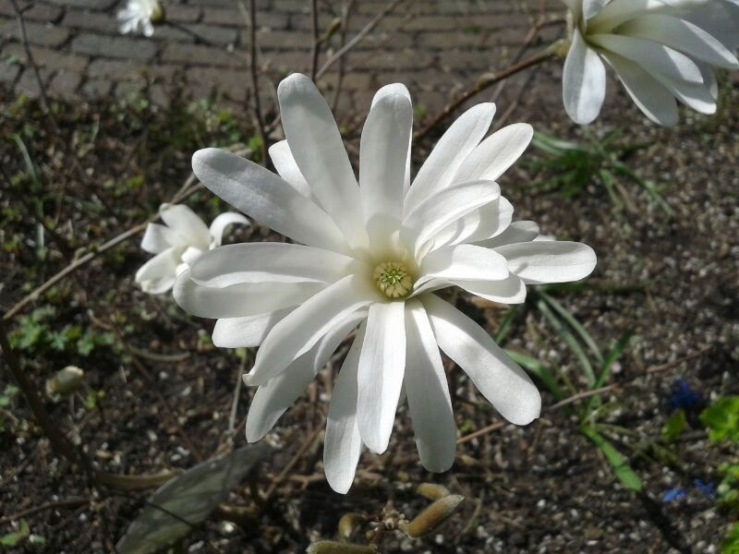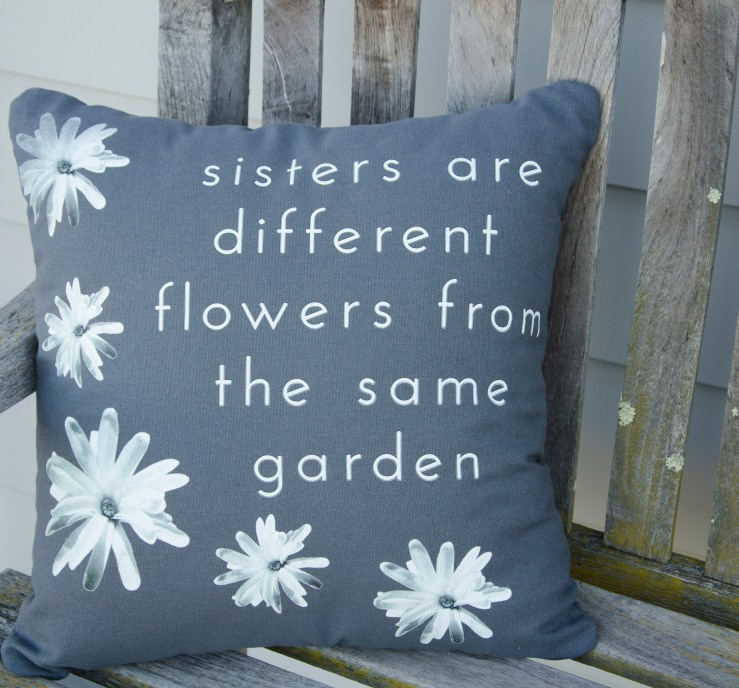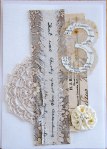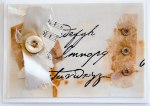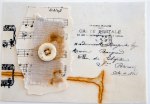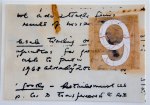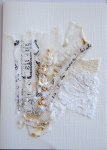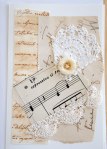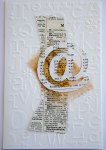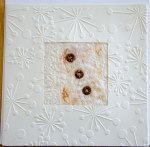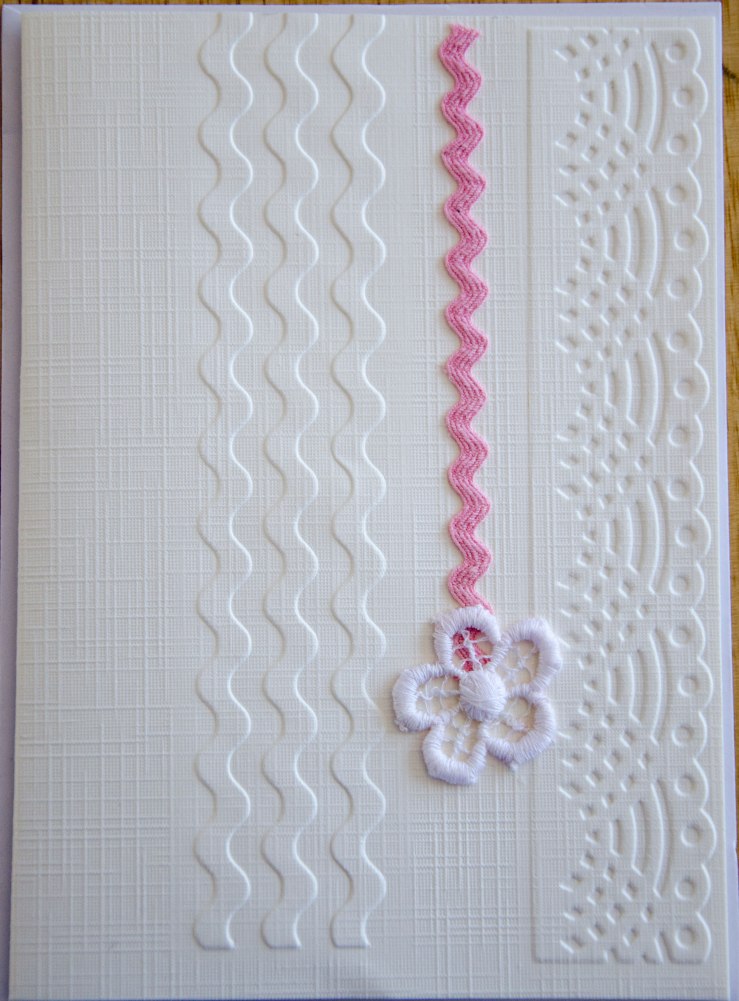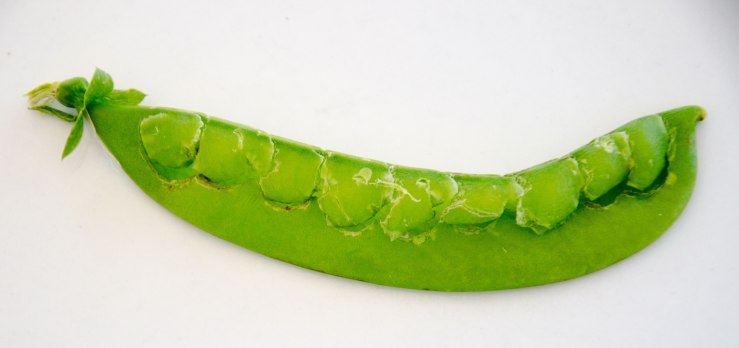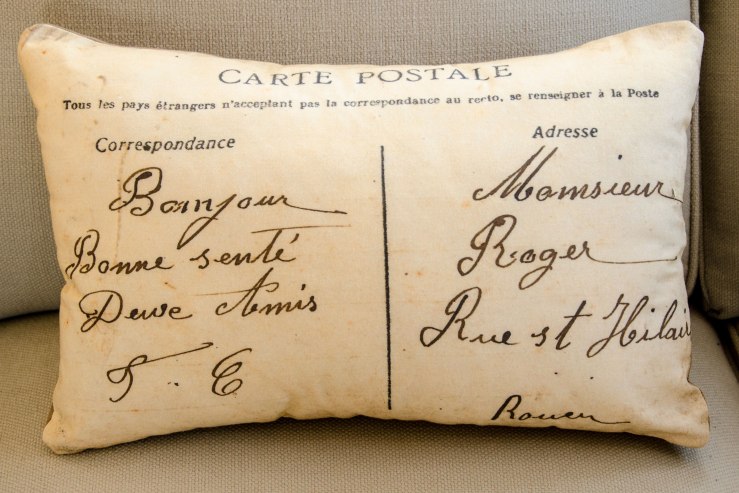I have just returned from five enjoyable days studying paper collage under American artist Donna Watson. Fabric is my medium, but I have become interested in the past couple of years in including paper with fabric. In particular, I am enjoying exploring Japanese paper (washi – 和紙). When strengthened with konnyaku it can tolerate immersion dyeing. This is my favourite piece from the five days. Donna is an excellent teacher – if you get a chance to study with her, I recommend it.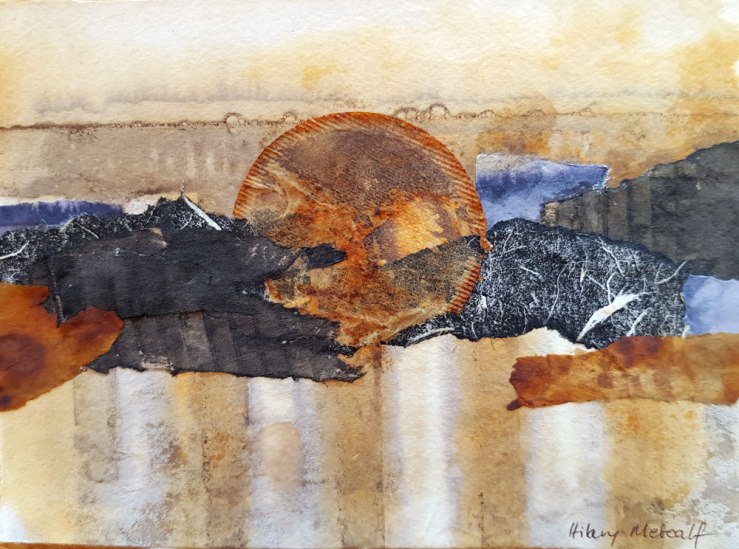
Playing with perspective
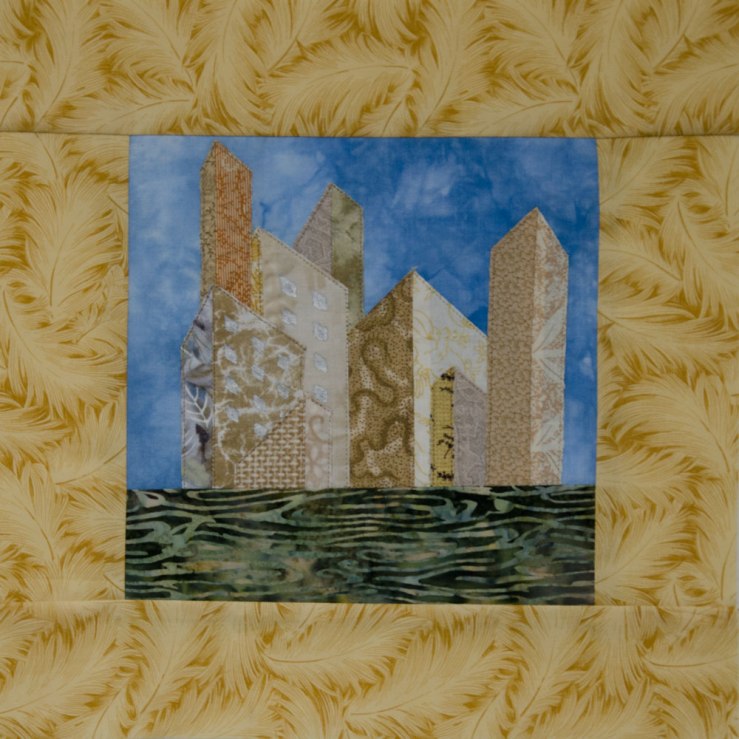
So I had a go at doing a cityscape with perspective. Two-point perspective, to be precise. This required a crash course on 1, 2 and 3 point perspective, a quick practice using pencil, paper and an eraser (mostly the latter), then firing up Adobe Illustrator and wrangling with the perspective grid, which, once you figure out how it works, makes things fairly quick and easy – until that point, you are better of with pencil and paper. Anyway, technically I am happy as the perspective is spot on. I even added windows, each of which has to be drawn separately, to get the correct perspective.
However, I made a number of design mistakes. There isn’t enough contrast in the fabrics so the two buildings on the lower left merge into each other, and the windows on the big building on the left are barely visible. I should have carried the buildings right to the edge of the picture frame, as now it looks like a small island floating in a green sea (which is NOT what I intended). I also need to include more buildings, particularly in the background, to make it look more high density. I also want to play around with the horizon line – I want to drop it much lower to get the feel of looking up at the buildings more. Anyway, lots to be going on with.
The centre panel is 8 x 8 inches and I added border with a view to making a little 12 x 12 quilt, but as I don’t really like it I won’t bother finishing it off. It has served its purpose as a valuable learning exercise.
Fabric postcards
I am not even going to address the fact that I have been AWOL for a year. Let’s just move on. I decided to indulge myself on Mother’s Day by doing whatever the hell I felt like, and that turned out to be making some Cityscape fabric postcards. These are quite addictive.
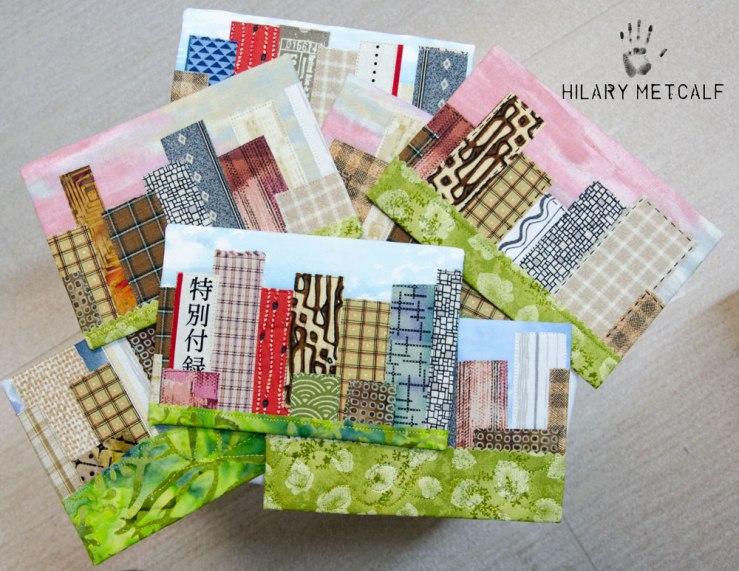
And here they are individually. I have never cared for the zig zag around the edge finish that most people do. I always think it looks scruffy and unfinished, no matter how good the satin stitch is.
These are all 6 inches x 4 inches. I think I will play with adding perspective for the next lot – have some ideas about how to do that.
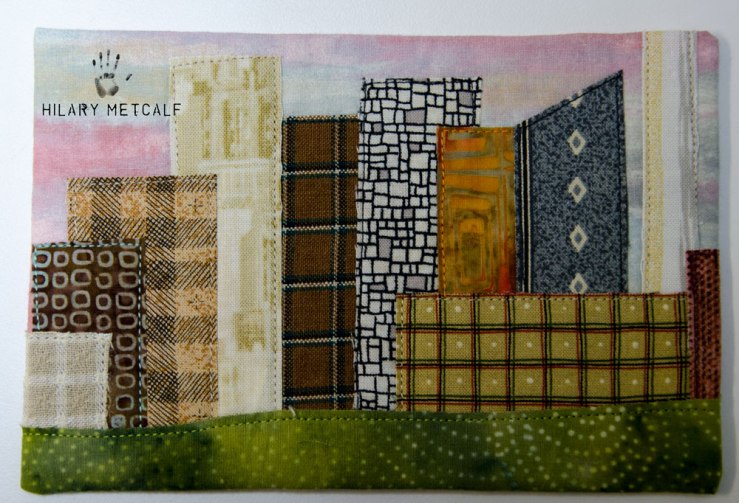
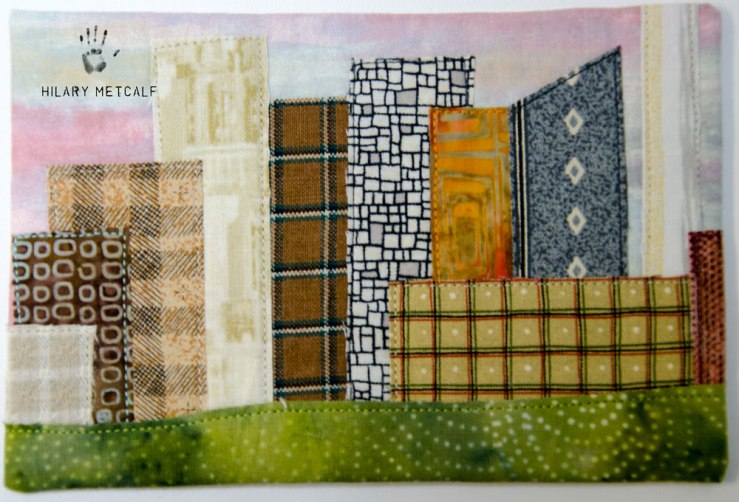
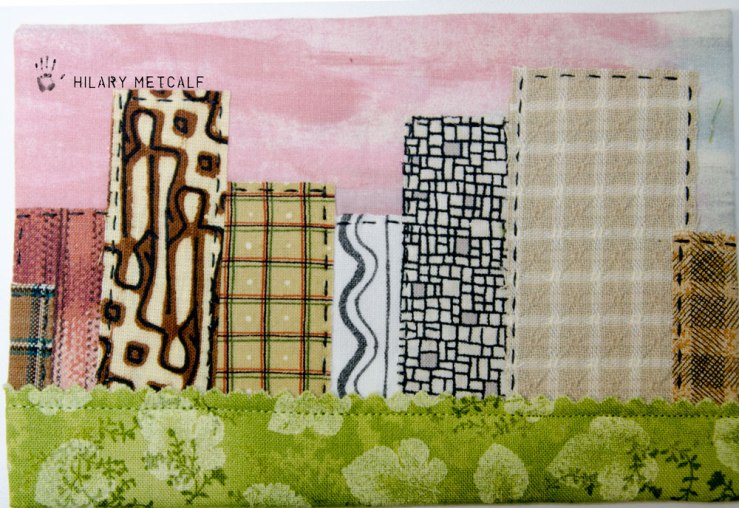


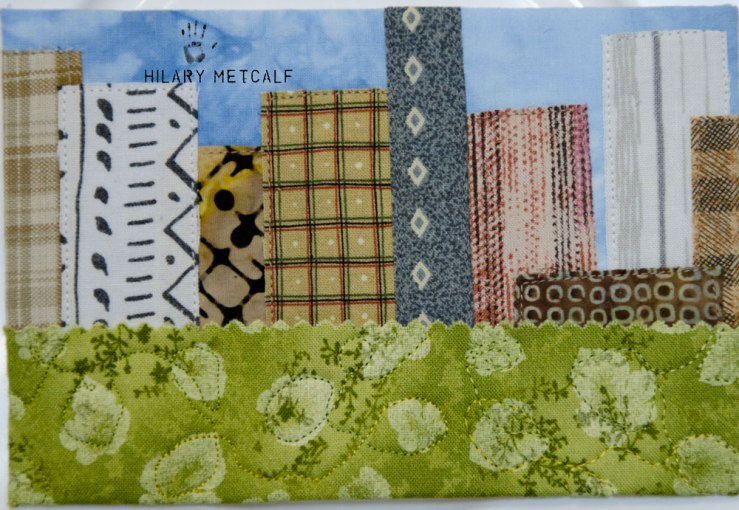
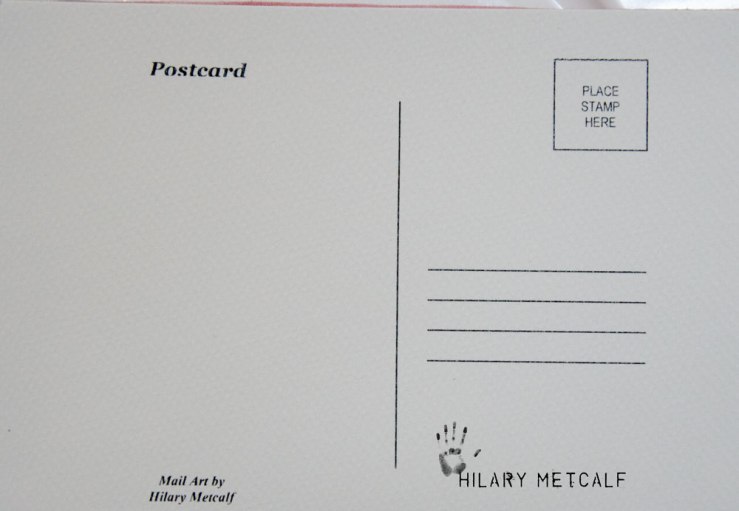
Ready, set go..
Fibre Arts Gippsland
New thermofax screen – Sashiko stitching
I am currently enamoured with all things Japanese. I am re-learning the language, forty years after I first did an intensive 12 month course, and I have a trip planned for later this year. So I wasn’t surprised to notice that a number of the new screens I have made recently have a distinctly Japanese theme to them.
Sashiko stitching is a traditional style of running stitch usually done in white on an indigo background. I must confess that traditional sashiko just doesn’t appeal to me much – the traditional designs are very precise and orderly. While many people find repetition and symmetry pleasing in designs, I am afraid I am not one of them. To me, same, orderly = predictable = boring, no matter how artfully executed. I like eccentricity and asymmetry – it takes far too much effort to be perfect!

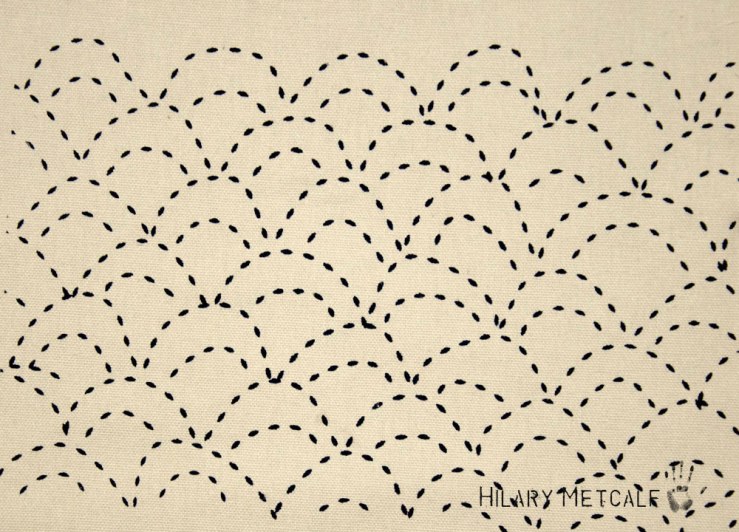
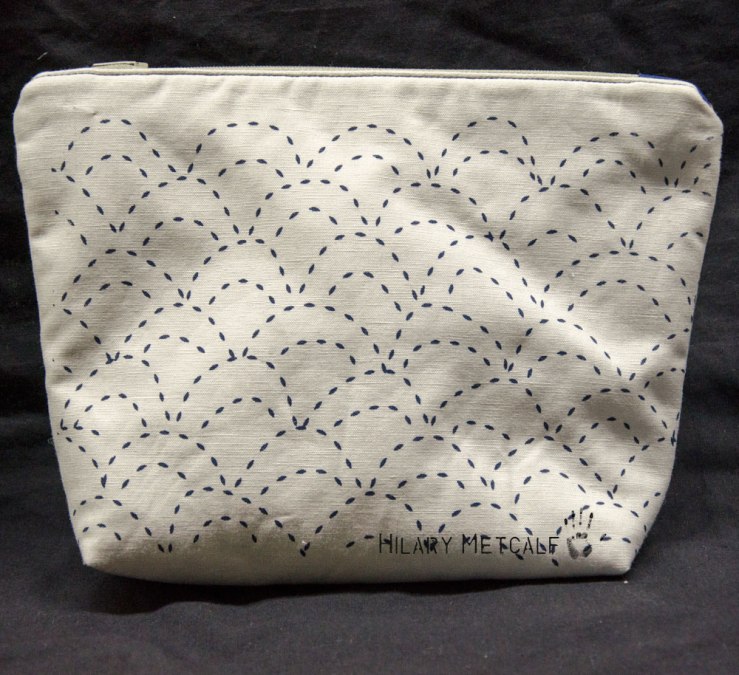
So I took a traditional sashiko clamshell design and in Adobe Illustrator, drew free-hand clamshells then used a seed stitch brush to simulate the stitches. I turned this into a thermofax screen, and voila – instant, quirky sashiko ‘stitching’. I made a zippered pouch of the fabric, and backed it with some complementary Japanese patchwork fabric.
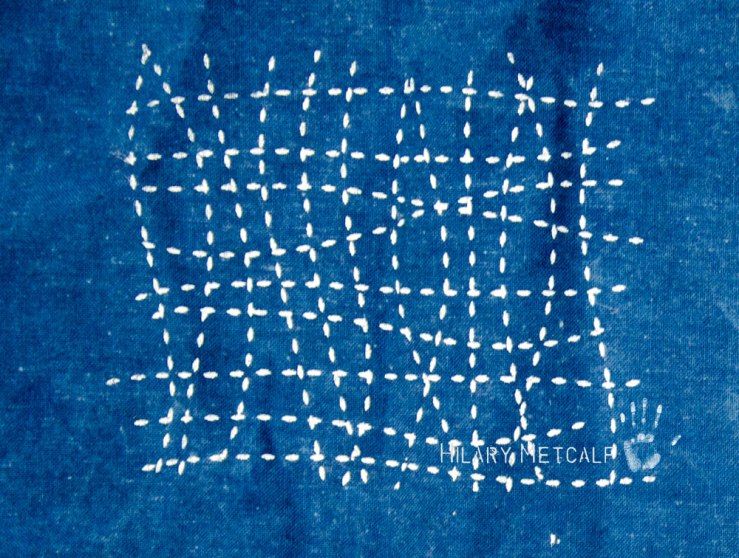
I played with the idea a bit and made a few more designs, including a traditional hexagon, some random, wavy stitching lines and then interspersed straight lines with circles. These remind of of the sand/gravel gardens at at temple in places like Kyoto.
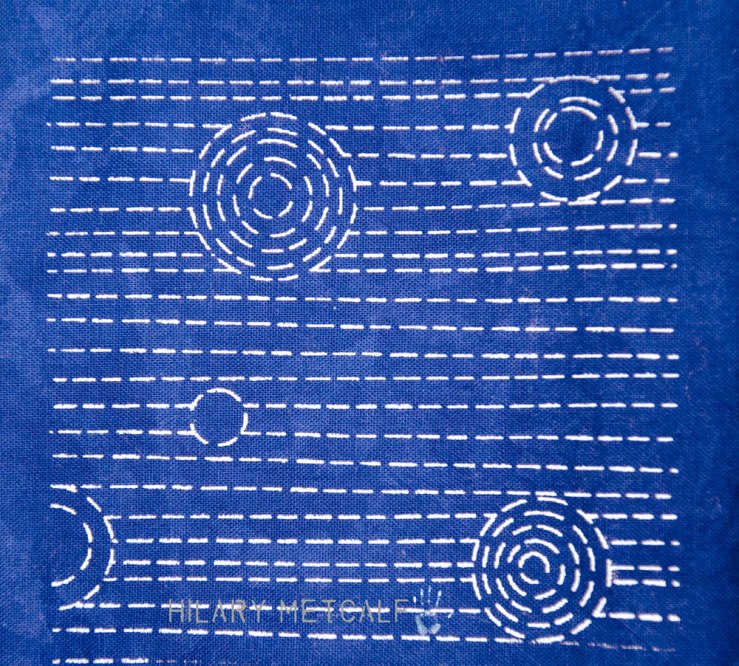
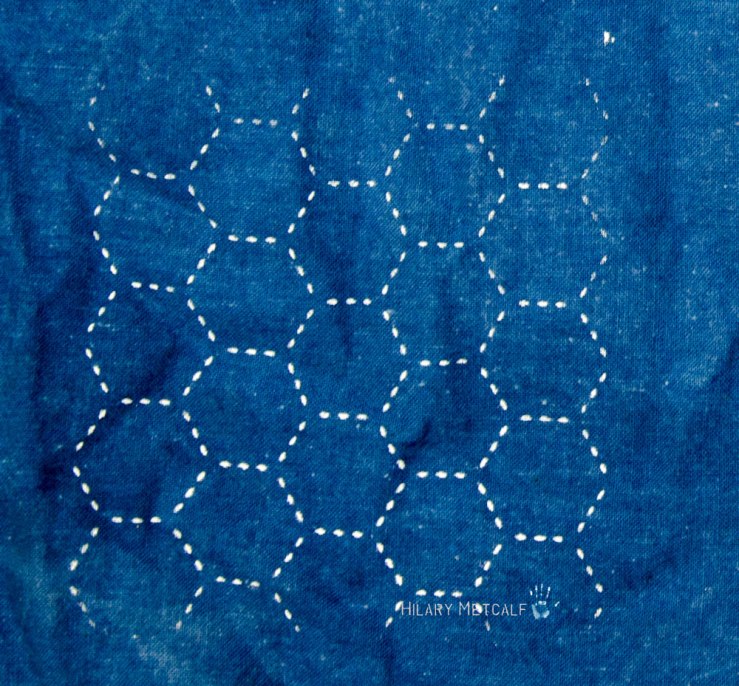
I have printed these onto some indigo fabric that I dyed using 60% reduced indigo from KraftKolour in Melbourne. A very quick and easy way to get into indigo dyeing if you would like to give it a go. These pieces only had one dip in the vat, so aren’t very dark, but I like this shade of blue.
Direct to garment printing
DTG printers are mainly used to print t-shirts, tote-bags, aprons etc. They are inkjet printers specifically designed to print to fabric. For many years I made do with printing to fabric using my home inkjet printer, which works fine providing you have the right sort of printer, or if not, use pre-treated fabric, and, don’t mind putting up with the size limitations. The print areas of DTG printers vary depending on whether they are single or double platen machines. The one I use is a double platen and can print up to 45cm x 60cm.
I have just completed this cushion for a client who wanted a very special flower (it looked like a white daisy to me but apparently not!) printed onto grey fabric with a quote about sisters. I extracted the flower from the background in Photoshop, resized and rotated it and added the text. One of the good things about the DTG process is that it provides photographic reproduction, so you can incorporate all the sorts of photographic effects (drop shadow, bevel and emboss, strokes etc) that you can’t use if you are say using a thermofax or other screen printing process.
This is now on its way across to the other side of the world – I hope she likes it!
You can see a bigger range of examples of DTG printed cushions on my website http://hilarymetcalfdesigns.com/. Remember, if you can create or capture a digital image, you can print it, with photographic quality, onto fabric.
Small things
I like making small things – they are quick, no big investment in time or materials and very satisfying. You can sort of work in a series doing lots of small things in a row to work through an idea. These cards bring together my love of working with rusted fabric, snippets from my embroidery and a few new techniques. Although not a scrapbooker, I have recently peered into that world and discovered a thing or two that is handy. A Cutttlebug paper embosser for one, that allows me to add some embossed detail to cards to combine with lace and bits. The last two cards have been embossed.
The numbers 3 and 9 and the ‘@’ were all cut with a an electronic stencil cutter – these are way too much fun and have great potential for surface design.
This little card was inspired by Helen Smith’s work. I don’t have the sort of printing press that she does, but after a bit of research discovered the Cuttlebug – lots of fun! Technically I think what she did is called collograph printing, whereas I embossed – suspect there is a subtle difference there, but don’t know enough about it!
Isn’t this amazing!
Digital fabric printing
A little while back I showed some vintage postcards from a friend’s collection. I have scanned all of these at high resolution and recently printed one onto fabric. This cushion is 35cm x 45cm. This idea has lots of potential for preserving and sharing old documents – imagine great-grandma’s birth or marriage certificate.
Digital fabric printing produces photo quality images onto fabric and opens up all sorts of possibilities.
A number of quilt artists use digital printing onto fabric in their work, including Wen Redmond, and Sandra Meech. At the recent tACTtile exhibition in Canberra I saw a couple of pieces by Beth Miller where she had embroidered/machine quilted on digitally printed fabric images which were close-up of tree bark – very effective.
Do you know of any other quilt/embroidery artists who work with digital fabric printing?












